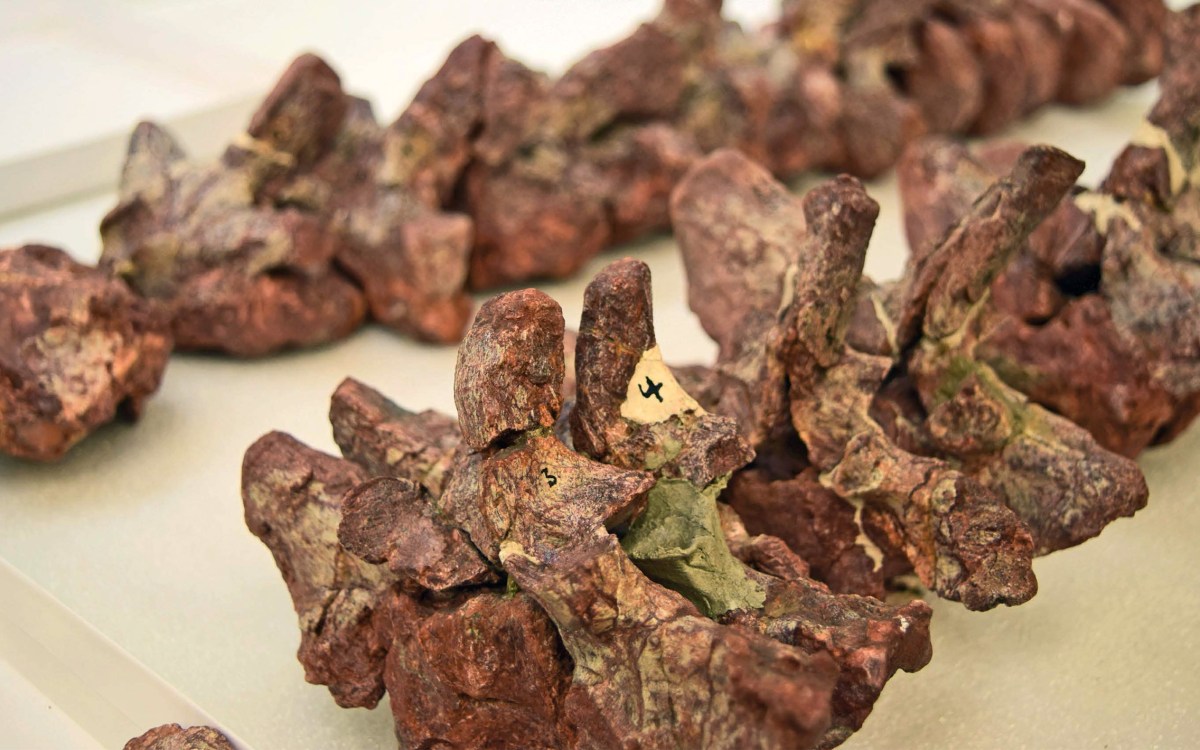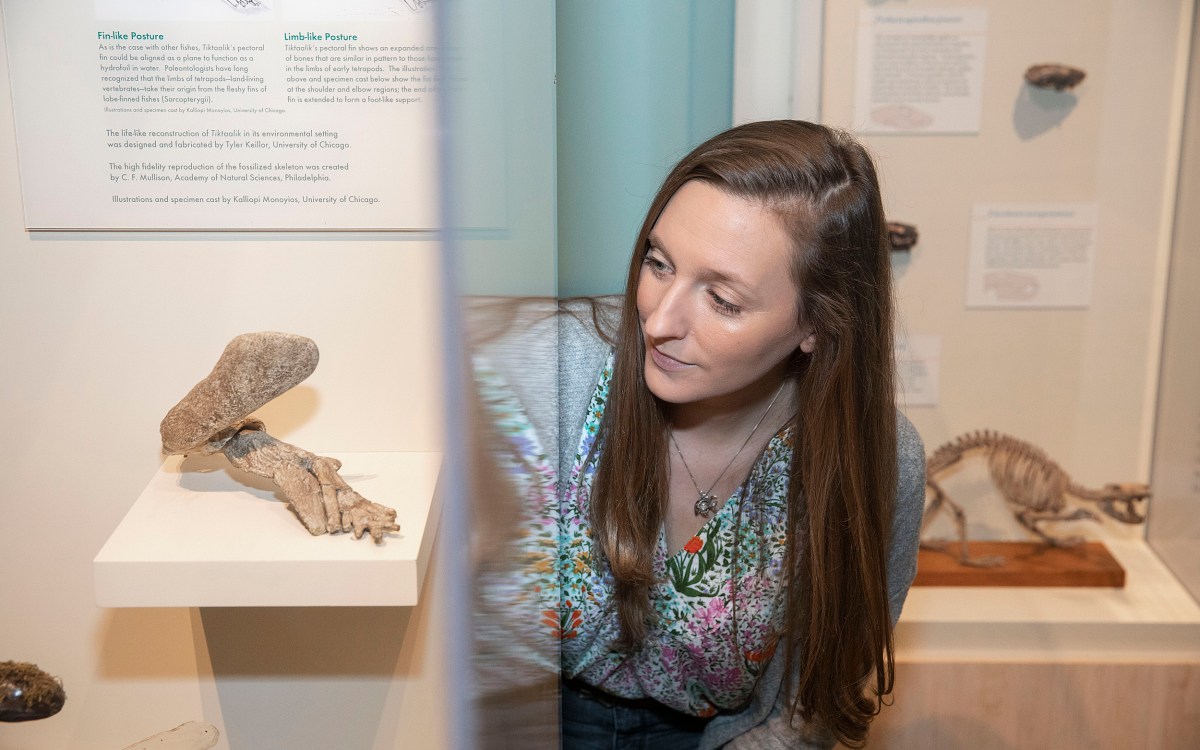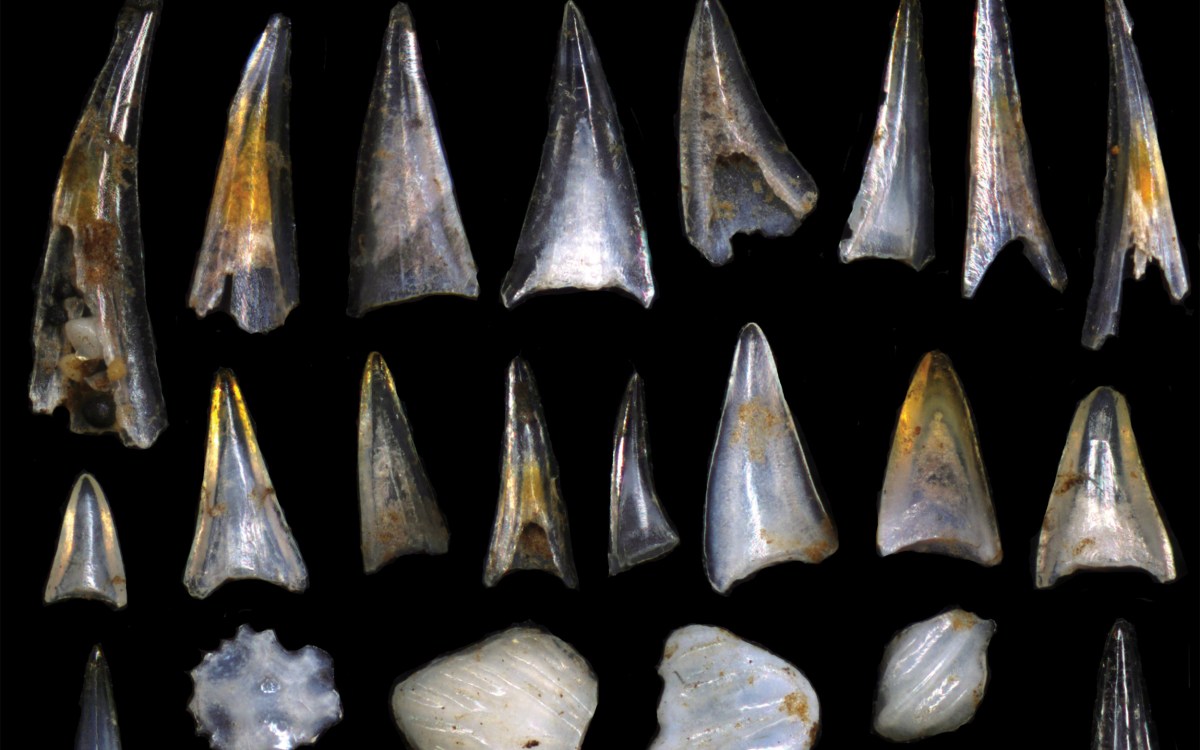
Vertebral complexity accrues in a step-wise manner in synapsids, the clade to which mammals belong.
Credit: April Isch Neander
A second look at evolution
New research suggests that some changes were quicker than others
How did simple, single-celled microorganisms become complex schools of fish and Brazilian monkeys — and us? It’s widely believed that the process of evolution always took place over eons, with random advantageous variations eventually becoming incremental shifts toward greater complexity. But that might not be the case.
For Stephanie E. Pierce Thomas D. Cabot Associate Professor of Organismic and Evolutionary Biology and curator of vertebrate paleontology in the Museum of Comparative Zoology, and research associate Katrina Jones, clues can be found in the backbone, or more specifically, the evolution of the astoundingly intricate mammalian vertebral column. The researchers recently published a paper in Nature Communications that tests seven hypotheses of how that may have taken place.
“This is a fundamental paper on understanding how this complex feature in mammals evolved, but it is also a great model system for understanding the evolution of complexity more generally,” Pierce said. “You go back into really old textbooks, even old vertebrate paleontology textbooks, and people will write, ‘Mammals’ vertebrae are really complex, and their ancestors’ were not.’ But there’s no in-between there. We are trying to get at the in-between.”
Often people have assumed complexity developed slowly over time — creating the impression of, as Jones said, “an unstoppable evolutionary law or an inevitable thing that’s happening all the time.” But Jones and Pierce’s data set indicates complexity in mammals and synapsids (the clade to which mammals belong) made quicker jumps forward than broad-scale trends in evolution suggest.
The biggest leap in vertebral complexity happened in cynodonts, the extinct forerunners of mammals that first evolved more mammal-like active lifestyles. This jump, plus a correlation between metabolism and complexity in living mammals, hints that increasing activity levels may have triggered the evolution of complexity.
“An important thing to understand is that evolution doesn’t always happen at the same rate in every group and at every period of time,” Jones said. “But it is sometimes quite tricky to put all the pieces of the evolutionary puzzle together.”
To make their own jump forward, Jones, Pierce, and co-author Ken Angielczyk from the Field Museum in Chicago needed to compile their own elaborate set of puzzle pieces. They needed data gleaned from fossils from around the world.
“We had to search down vertebral columns that were preserved end-to-end and were almost 100 percent complete with no breaks in them,” Pierce said. “We collected this data over a three-year period … by going to a lot of museums and looking at a lot of fossils from different points in time.”
Specimens came from Germany and the United Kingdom, South Africa and South America. But no matter where the team gathered bones, they often ran into the same problem: poorly preserved fossils. It turns out early paleontological methods of displaying fossils — painting them, or plastering over them, or running wire through them to make them stand upright — aren’t ideal if you want to actually study the bones.
“There’s a reason nobody has studied the vertebrae before,” Jones said with a laugh. “Often we had to use micro-CT, which is similar to a CAT scan you would get at a hospital but much more powerful, and digitally remove these vertebral columns from the rock.”
But now that the scientists have the extensive data set, all sorts of lines of inquiry are emerging. Their new publication in Nature Communications is actually the second paper to come from the data — the first, published in Science, revealed the evolutionary history of the regions that make up the mammal backbone. The team is planning more research, but could spend years excavating insights from this data set alone.
“It’s a career’s worth of data,” Jones said.
This research was funded by the National Science Foundation.








